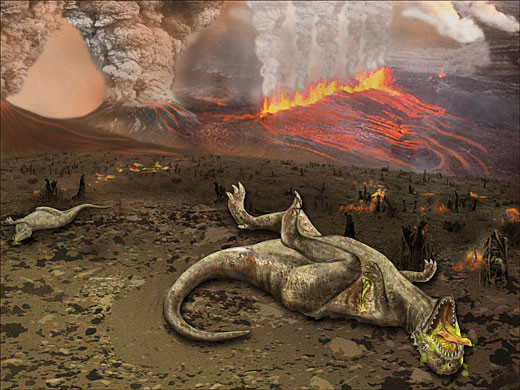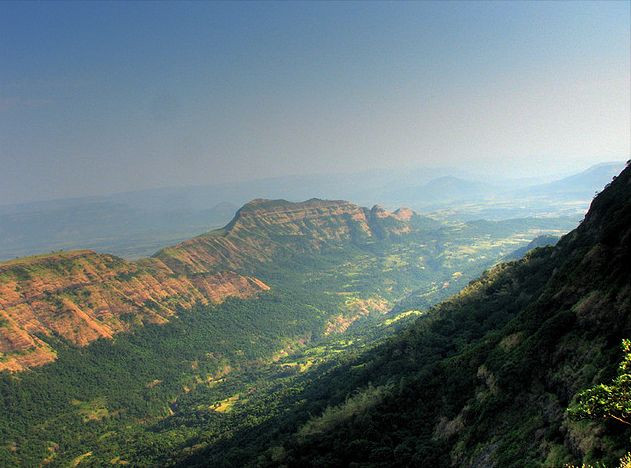Two massive magma plumes fuelled Deccan Traps eruption 65 million years ago
Mass eruption at one of the world's biggest volcanic features contributed to extinction of the dinosaurs.

Not one but two magma plumes fuelled the Deccan Traps mass eruption around 65 million years ago, scientists have discovered.
The eruptions, which lasted tens of thousands of years, are believed to have helped push the dinosaurs to extinction, yet our understanding of them remains limited. To get a better insight, Petar Glišović and Alessandro M. Forte created a model to trace back the structure of the mantle to look at changes over time. And their findings showed there were two main hotspots feeding the eruptions – not one as previously thought.
What are the Deccan Traps?
The Deccan Traps are one of the biggest volcanic features on Earth. Located in west-central India, they began forming just over 66 million years ago through massive volcanic eruptions. As the flood basalt solidified, it formed multiple layers – producing what we see today. In total, the geological feature is over 2km thick and covers an area of 500,000km<sup>2.
Previous research has shown the volcanic eruptions began about 250,000 years before the Chicxulub asteroid struck, 66 million years ago, and continued for 500,000 years after. This has led some scientists to suggest the asteroid impact triggered the eruptions on the other side of the planet. Other theories suggest the two events coincided by chance, creating a "one-two punch" that wiped out the dinosaurs.
At present, it is thought the Reunion hotspot caused the Deccan Traps eruption, with a deep mantle plume feeding the eruptions.
Understanding its eruptive history

Because we do not know what the mantle structure was like in the Deccan Traps region 65 million years ago, reconstructing how it changed has been challenging. Published in the journal Science, Glišović and Forte said previous interpretations of mantle changes that led to the eruptions has been based on analysis of the surface geological record.
"Correlations between rapid changes in Indian plate velocity and time of the Deccan eruptions along with theoretical modelling of plume-related plate-driving forces support the longstanding hypothesis of a mantle plume origin for the Deccan eruptions," they wrote. But this alone does not show the origin of the magma.
To get a better insight, the researchers used "time-reversed convection modelling" that included a tomography-based view of the present-day mantle. Their 3D view of the mantle allowed them to work backwards to look at changes over time.
Two plumes

Their findings showed there was an upwelling coming from under the Reunion hotspot at the time of the eruptions. However, they also showed there was a second active upwelling under the Comores hot spot that would probably have helped feed the huge eruption.
While the Comores hotspot contributed slightly less than the Reunion hotspot, it could have provided around 35 million cubic kilometres of melted mantle. The upwelling – totalling 75 million cubic kilometres – began around 68 million years ago. "Such ample amounts of mantle melting would have been sufficient to supply the Deccan lava flows," they wrote. Between 20 and 40 million years later, the volume of available magma would have decreased to zero.
"Although our model cannot exactly predict the peak eruption of the Deccan lava flows at 66 million years ago, it does accurately predict a 10 million year time window that strongly peaked near 68 million years ago, in which mantle melt was accessible to lava flows that preceded, coincided, and then followed the main Deccan event."
© Copyright IBTimes 2025. All rights reserved.





















